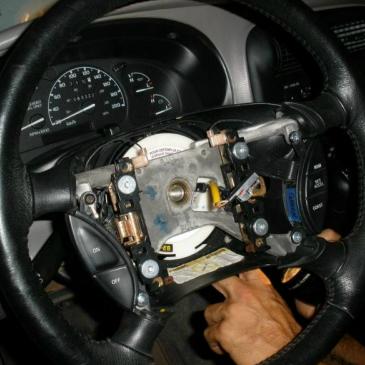- Joined
- Nov 13, 2018
- Messages
- 4,988
- City
- Canaan
- State - Country
- NH - USA
- Vehicle Year
- 1993
- Vehicle
- Ford Ranger
- Drive
- 2WD
- Transmission
- Automatic
- Total Drop
- 3"
- Tire Size
- 235/55R16
- My credo
- If you don't have time to do it right will you have time to do it over?
In the late 70's/early 80's I installed a bunch of cruise kits and dealer installed a/c systems. Some of the cruise kits used magnets held to the driveshaft with nylon tape and a magnetic pickup bolted to the floor pan. Later the kits came with a speed sensor to plug in between the speedo head and the cable. There used to be 2 adjustments for sensitivity and centering to tailor the way it worked to the individual car.
I installed cruise on a Mercedes 190 diesel once, the most gutless car I'd ever driven, and the customer came back complaining about the cruise shutting off on hills. The car didn't have power enough to maintain speed on hills without downshifting. Cruise can't downshift a manual transmission, the car lost speed, so the cruise shut off. The owner knew he had to shift down on hills and it was still hard to explain to him why the cruise was shutting off.
I installed cruise on a Mercedes 190 diesel once, the most gutless car I'd ever driven, and the customer came back complaining about the cruise shutting off on hills. The car didn't have power enough to maintain speed on hills without downshifting. Cruise can't downshift a manual transmission, the car lost speed, so the cruise shut off. The owner knew he had to shift down on hills and it was still hard to explain to him why the cruise was shutting off.














